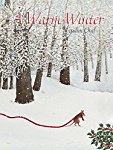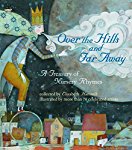Twenty years ago I got a chronic illness that changed my life. I had to adjust my expectations, learn to live within my limits, and most importantly learn to enjoy and love the new life that I had built for myself. It was not easy. At all. It still isn't.
What I loved about today's picture book was the fact that it is about a character, Gary, who cannot do what his friends and relatives do, but he still manages to have a full life, one that offers him a unique perspective. In fact he is able to share what he learns with others, which is wonderful.
Gary
What I loved about today's picture book was the fact that it is about a character, Gary, who cannot do what his friends and relatives do, but he still manages to have a full life, one that offers him a unique perspective. In fact he is able to share what he learns with others, which is wonderful.
Gary
Picture Book
For ages 5 to 7
Candlewick Press, 2016, 978-0-7636-8954-4
Most of the time Gary is just like the other racing
pigeons that he lives with. He eats what they eat, lives in a loft, and dreams
of going on adventures. However, when the other pigeons leave in the travel
basket to attend races, Gary stays home and works on his scrapbook. Gary cannot
fly, and so he cannot join the other racing pigeons on race days. Instead, he
lives vicariously through his friends, recording their race experiences in his
scrapbook.
One night Gary
leans over from his perch so far that he loses his balance. Gary and his
scrapbook fall into the travel basket, and the next day he, still in the
basket, is taken far from home. When he arrives at his destination the basket
is opened and the sky is “full of feathers and flapping wings.” The racing pigeons
are off, but Gary, who cannot fly back home like the other pigeons, is stuck,
lost in a city that he does not know at all.
Needing cheering
up, Gary looks at his scrapbook, and little by little the cityscape around him
starts to look “a little more familiar.”
This wonderful
picture book tells the story of a bird who cannot fly and who therefore cannot
see the world. Except through the pages of his scrapbook. Then life presents
Gary with a situation that could turn out to be a disaster and he has to figure
out a solution.
What is perhaps
the best part of this delightful story is the way in which it ends. It turns
out that Gary, the pigeon who cannot fly, has something to offer the pigeons
who can fly.









